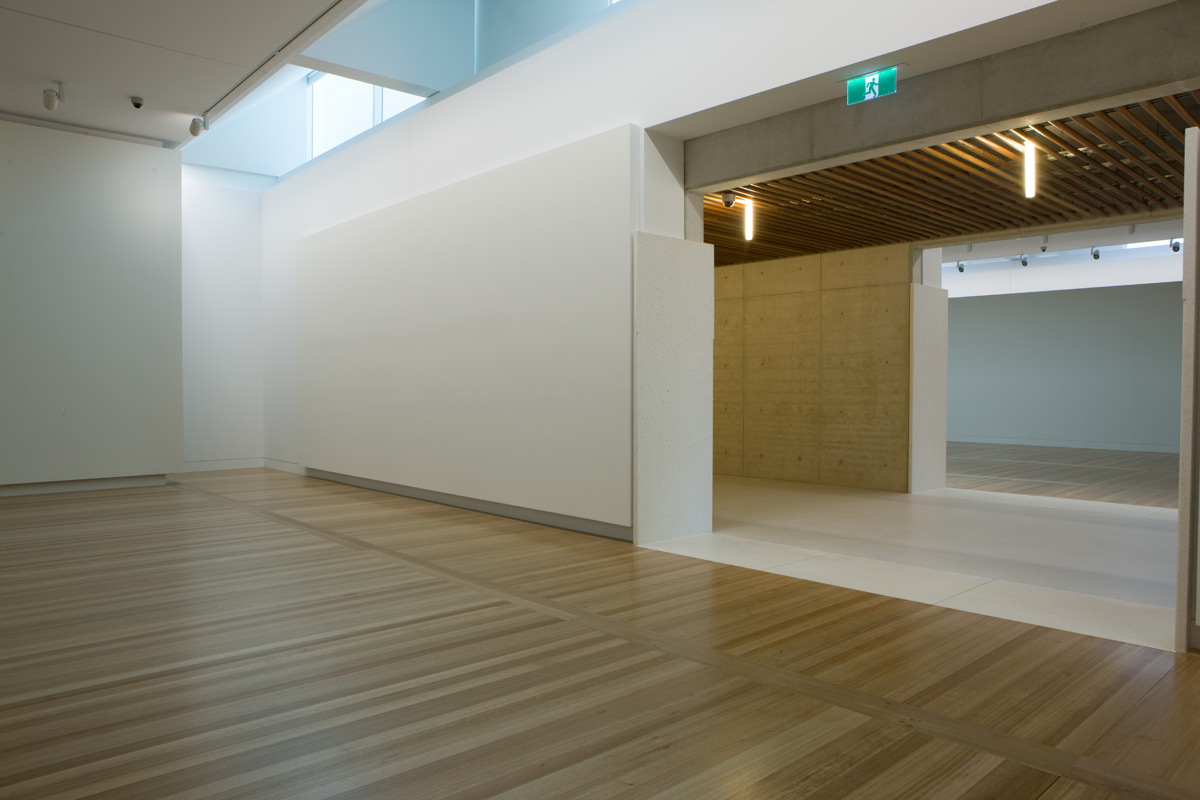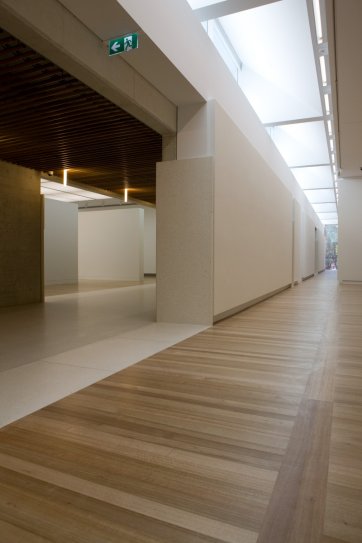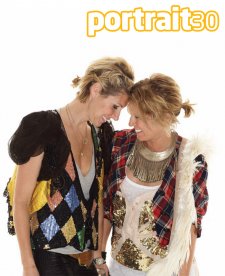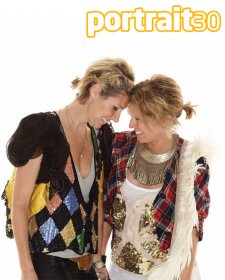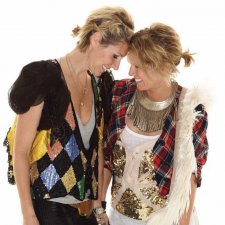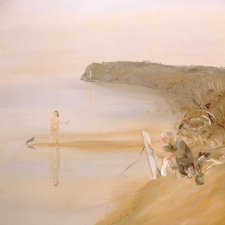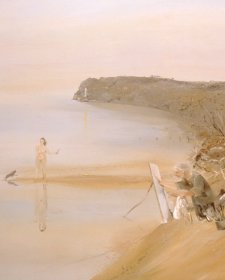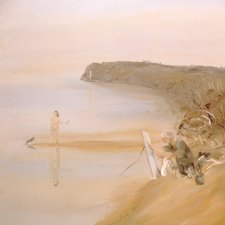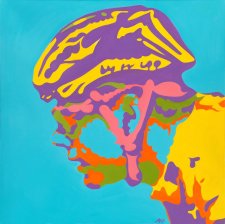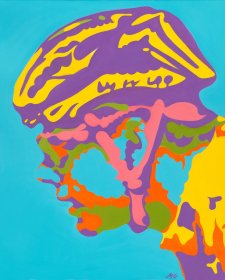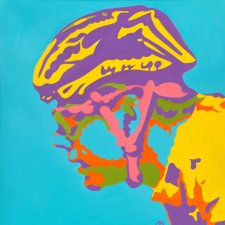The inaugural hang of the National Portrait Gallery’s beautiful new galleries presents over 400 unique, inspiring and recognisable portraits. In the galleries the portraits reflect the lived experiences of people – daughters and sons, mothers and fathers, families and friends, teams and gangs, individuals and loners.
They present faces of Australia: of Indigenous heritage, of struggles for nationhood, of attempts to define masculine and feminine character. They include stories of arrivals and departures, of social cohesion and social upheavals.
Each portrait is the result of an encounter between the sitter and the artist, and in this encounter a great deal is revealed. Conventions have always governed the role of the portrait in the world of the sitter. As these conventions change, so do the forms of portraiture.
The collection galleries begin with a room of portraits commissioned by the National Portrait Gallery, supplemented by other works from the collection. The portraits in this gallery reflect the most contemporary approaches to portraiture and feature individuals who are at the forefront of contemporary life. Each year the National Portrait Gallery commissions portraits in order to represent Australians of whom a suitable portrait does not exist. Commissions provide an opportunity for the Gallery to bring together leading contemporary artists with outstanding individuals. The Gallery’s iconic 1999 portrait commission of musician Nick Cave painted by Howard Arkley is displayed in this gallery and it is joined by an exciting group of recent portrait commissions exhibited for the first time.
From the most contemporary portraits to the origins of portraiture in Australia, the chronological historical display of the collection begins in the Robert Oatley Gallery. This gallery covers the period 1760s to 1840s and presents portraits of Indigenous Australian peoples from New South Wales and Tasmania, explorers and navigators, and the first wave of European settlers. In this gallery navigator Captain James Cook is reunited with his ship’s botanist Sir Joseph Banks, whose portrait by Sir Joshua Reynolds has been generously lent by the National Portrait Gallery, London. John Webber’s commanding portrait of Cook can be contrasted with the newly acquired portrait of Captain William Kinghorne, painted by his friend Thomas Lempriere. Cook’s voyage, backed by the British scientific and naval establishment, was ambitious, demanding and vastly encompassing. Kinghorne’s captainship in the Colonial Marine, and later his commercial whaling operation, were localised and speculative.
The Europeans who arrived in Australia in the late eighteenth century encountered a territory occupied by Indigenous peoples with a rich and ancient culture. To supplement the Gallery’s small but growing collection of portraits of Indigenous Australians from the early decades of European settlement, important portraits have been borrowed from public and private collections. On display in the Robert Oatley Gallery are rare portraits that evoke their extraordinary lives, including Wangal man Bennelong, Guringai man Bungaree, Tasmanian Nuennone woman Trukanini and Nuennone man Woureddy, and leader of the Ben Lomond people of Tasmania, Manalargenna. Relationships between Indigenous peoples and settlers were complex. There were efforts towards mutual understanding, as well as strong resistance from Indigenous groups to the expansion of settler society.
Portraits in this historical period ranged from formal oil paintings to miniatures, each with their own claim to status or intimacy. Displayed in the Robert Oatley Gallery is a pair of small portraits of Colonial Architect Mortimer Lewis and his wife Elizabeth, an intimate record of companionship. The second half of the nineteenth century, a period characterised by economic and cultural growth, is spanned within the A & S Liangis Gallery, which includes portraits of the second wave of settlers, of civic leaders and artists and musicians. The gold rush of the 1850s brought immigrants to Australia from Europe, America and China and forged powerful mythologies of resistance to authority.
From the 1860s the development of photography was quickly adopted to serve the needs of portraiture, making portraits more affordable and accessible. Displayed in the A & S Liangis Gallery are the extraordinary photographic portrait of explorer Edward John Eyre by one of the great pioneers of world photography Julia Margaret Cameron, and the portrait of Indigenous companions Trukanini and William Lanne by colonial Hobart photographer Henry Frith.
Recession and drought in the 1890s created enduring mythologies of Australian fortitude and mateship as female suffrage brought about rights for women. In the A & S Liangis Gallery are portraits of influential women including performer Dame Nellie Melba and writer Miles Franklin.
The A & S Liangis Gallery includes a group of portrait paintings by Tom Roberts, one of Australia’s most outstanding portrait artists and an advocate for a national portrait collection. The Gallery’s newly acquired life-sized portrait of performer Hilda Spong is the centrepiece of an arresting display of portraits by Roberts.
The John Schaeffer Gallery presents portraits associated with Australia’s Federation, the First and Second World Wars, and the development of modernised culture in Australia. In this gallery are portraits of wartime leaders including James Quinn’s searching portrayal of General Sir John Monash, Napier Waller’s gentle pastel drawing of Australian Army nurse Margaret Anderson, and informal photographic portraits of serving officers.
While Australia struggled with a volatile political climate and the effects of seesawing world financial markets, its people celebrated achievements in engineering, sport and adventure. In this gallery are portraits of pioneer aviators Sir Charles Kingsford Smith, Captain Charles Ulm and Nancy Bird Walton. The John Schaeffer Gallery also includes focus displays evoking the strident personalities associated with the exploration of Antarctica and the construction of the Sydney Harbour Bridge.
International art movements exerted a powerful influence on portraiture in Australia as artists used the self portrait to analyse and explore their inner selves. Displayed in the John Schaeffer Gallery are a striking group of self portraits, including George Lambert’s grandly dramatic self image, and Nora Heysen’s and Grace Cossington Smith’s intently self-inquiring portrayals.
The Fairfax Gallery presents portraits that reveal the rapid social and cultural change experienced from the 1950s to the 1980s. Immigration enriched the cultural landscapes of cities and towns, and the notion of Australia as a multicultural nation was strengthened. Television and advertising promoted the ideals of the nuclear family, while burgeoning youth culture gave rise to fears of juvenile delinquency. Beach culture gave Australia a hedonistic and physical identity, and intellectuals decried Australia’s lack of culture, many becoming expatriates abroad. Into the 1960s and 1970s social liberation movements, bohemianism and counter-cultural forces drove cultural and political change. Australia placed itself firmly in an international context.
The portraits displayed in the Fairfax Gallery reflect these turbulent times. Clifton Pugh’s portrait of satirist Barry Humphries, and Clif Pier’s portrait of poet and Aboriginal rights advocate Kath Walker (Oodgeroo Noonuccal), evokes the growing confidence of Australian creative culture. The Fairfax Gallery includes a display of photographs that reflect the powerful and unique contributions made to Australian culture by forthright individuals including Germaine Greer, Patrick White and Charles Perkins.
The Ian Potter Gallery presents contemporary Australian portraits from the 1990s to the present. The glossy style of photographic portraits displayed in this gallery evokes the influence of celebrity culture. Vibrant photographic portraits of Elle MacPherson, Kylie Minogue, Russell Crowe, Ian Thorpe and Cathy Freeman reflect the powerful presence of Australian talent in international creative professions and sporting events. Portraits in the Ian Potter Gallery will be regularly changed reflecting the Gallery’s broad contemporary collection.
The Ian Potter Gallery incorporates the Potter Project Spaces that present multimedia artworks and a changing program of artists’ projects exploring contemporary approaches to portraiture. Two digital video portraits premiere here: David Rosetzky’s video portrait of actor and theatre company director Cate Blanchett, and Petrina Hicks’s video portrait of surfing champion Layne Beachley.
The National Portrait Gallery presents an evolving view of Australian society and culture told through portraiture and research on the collection continues in order to effectively communicate its stories and to identify suitable portraits for acquisition.
The National Portrait Gallery’s inaugural hang of its collection in the new building represents the culmination of many years of planning. It is from this high point in the Gallery’s development that the unique collection will continue to grow.
